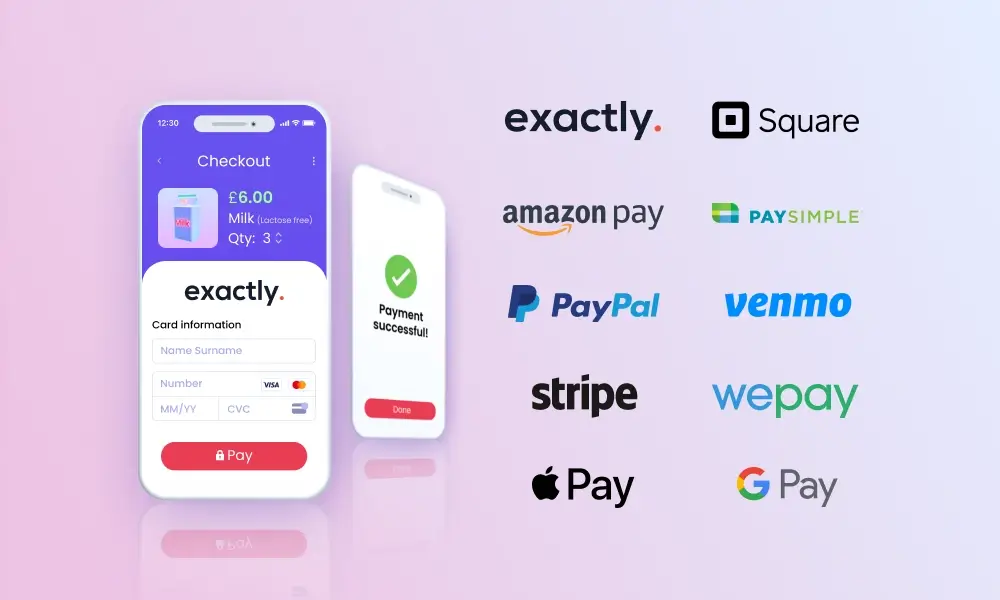Best Payment Apps for 2025: Simplifying Transactions for Your Business
In today’s fast-paced world, payment apps have revolutionized the way we handle financial transactions. Whether you’re a small business owner or a consumer looking for convenience, choosing the right mobile payment solution is crucial. In this article, we’ll explore the best payment apps, how they work, and why they are beneficial for both personal and business use.

Why Use Payment Apps?
With the rise of contactless payments, the need for traditional cash or credit card payments is steadily declining. Mobile payment apps offer security, speed, and convenience. Whether you’re looking to streamline your business transactions or simply need a fast way to pay for your daily purchases, these apps are designed to make life easier.
For businesses, integrating mobile payments can lead to faster transactions, better customer experiences, and improved cash flow management. For consumers, it means avoiding long queues and carrying around physical cards.
How Do Payment Apps Work?
Payment apps allow users to make transactions directly from their smartphones. By linking your bank account, credit card, or digital wallet, you can send and receive payments instantly. The technology behind these apps usually leverages Near Field Communication (NFC) or QR codes to complete transactions securely.
Moreover, payment apps use advanced encryption and authentication methods to ensure that your personal information remains safe. This makes them a reliable and trusted option for both consumers and businesses.
Top Payment Apps for 2025
1. PayPal
PayPal has long been a leader in the digital payments space. Known for its reliability and wide acceptance, it allows businesses to accept payments online and consumers to send money easily. PayPal offers buyer protection, making it a popular choice for online transactions.
With the ability to connect to your credit card or bank account, PayPal supports payments for a variety of services, including goods, subscriptions, and donations. The app also allows international transactions, making it a great choice for businesses that deal with customers globally.

2. Venmo
Venmo is another popular app for peer-to-peer (P2P) payments. Owned by PayPal, Venmo offers a social element by allowing users to share and comment on transactions. It’s a go-to for friends and family who want to split bills or reimburse each other for everyday expenses.
With Venmo, transactions are quick and straightforward, and there are no fees for sending money from your linked bank account or debit card. This makes it an ideal choice for casual users looking for a fast and easy way to transfer funds.
3. Cash App
Cash App has gained popularity for its simple interface and no-fee transfers. It allows users to send and receive money, buy Bitcoin, and even invest in stocks. Cash App’s unique feature is the ability to get a free Cash Card, which is a physical debit card tied to your app balance.
For businesses, Cash App offers a merchant account option, allowing businesses to accept payments seamlessly. Its instant transfer option is also great for businesses looking to get access to funds quickly.
4. Google Pay
As a part of the Google ecosystem, Google Pay offers a highly reliable and secure way to make payments. Google Pay allows you to store debit, credit, and loyalty cards in a digital wallet, making it a convenient option for shopping both online and in-store.
For businesses, Google Pay integrates seamlessly with Google’s advertising platforms and Google Wallet, providing an easy way to accept payments online. It’s also widely accepted at most retailers, further enhancing its usability.
5. Apple Pay
For Apple users, Apple Pay is the go-to payment app. Using NFC technology, Apple Pay allows users to make payments in-store, online, and even within apps. With a simple tap of your phone, you can complete transactions with security features like Face ID or Touch ID for authentication.
For businesses, Apple Pay offers a fast, secure, and seamless way to accept payments. It’s particularly useful for those who run an online store or operate in retail environments that accept contactless payments.
Benefits of Payment Apps for Businesses
Faster Transactions
One of the primary benefits of using mobile payment apps for business transactions is speed. Transactions are completed almost instantaneously, which improves the customer experience and leads to quicker turnarounds.
Enhanced Security
Payment apps employ advanced encryption technologies and two-factor authentication to safeguard sensitive data. This reduces the likelihood of fraud and ensures that customer information is kept secure.
Increased Sales
By offering mobile payment options, businesses can attract a broader audience, especially those who prefer cashless or cardless transactions. Payment apps provide the flexibility that modern consumers seek.
Key Features to Look for in a Payment App
When selecting a payment app, it’s important to consider certain features that align with your needs. Here are some of the most essential:
-
Security Features: Look for apps that use encryption and multi-factor authentication to protect your personal and business data.
-
Integration Capabilities: Choose a payment app that integrates seamlessly with your POS system, accounting software, or eCommerce platform.
-
Customer Support: Opt for apps that provide excellent customer support in case you encounter issues with payments.
-
Transaction Fees: Be mindful of any hidden fees that could affect your bottom line, especially if you’re using the app for business transactions.
FAQs About Payment Apps
What is the best mobile payment app for business?
The best mobile payment app for your business depends on your needs. For small businesses, PayPal and Square are great choices, as they offer flexible payment solutions and integrations with eCommerce platforms. Larger businesses may prefer apps like Stripe, which offer more advanced features.
Are payment apps safe to use?
Yes, payment apps are generally very secure. Most apps use encryption and multi-factor authentication to ensure that your financial data is safe. However, it’s still important to be cautious and follow security best practices, like using a strong password.
How do I receive payments through payment apps?
To receive payments, you’ll typically need to link a bank account or a merchant account to the app. Once set up, you can share your payment link or QR code with customers, who can then send money directly to your account.
Conclusion
The best payment apps for 2025 are designed to enhance the payment experience, offering benefits like security, speed, and convenience. Whether you’re a business owner looking for a seamless way to accept payments or a consumer who wants to make quick and easy purchases, there’s a mobile payment solution for everyone.
Choosing the right app will depend on your specific needs, whether it’s a simple P2P payment app like Venmo or a more comprehensive solution like Google Pay or Apple Pay for your business. By understanding the features and benefits of each, you can make an informed decision and enjoy the convenience of modern mobile payments.
By integrating mobile payment solutions, you’ll not only streamline your financial processes but also ensure that your business remains competitive in an increasingly cashless world.



